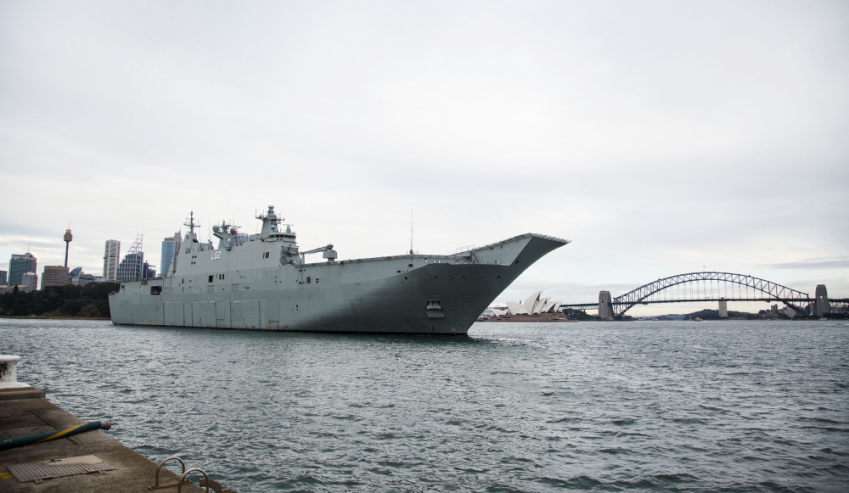The NSW government, in conjunction with industry and a number of institutional partners, has officially launched the NSW Defence Innovation Network (DIN) to increase the state’s position as a defence industry hub.
To continue reading the rest of this article, please log in.
Create free account to get unlimited news articles and more!
Officially launched by NSW Minister for Trade and Industry Niall Blair and Assistant Minister for Defence David Fawcett, DIN will provide a range of support and collaboration opportunities for the defence industry in NSW.
The network provides a single door contact point for trouble free access to member universities in NSW. DIN also facilitates easy links to appropriate skills and capabilities to drive innovation and technology development towards commercially focused solutions for defence.
DIN brings together key industry and education institutions, including the University of Sydney, the University of NSW, Macquarie University, University of Wollongong, University of Newcastle, Western Sydney University and University of Technology Sydney to provide support and collaboration across a variety of capability areas, with specific focus on:
- AI, cyber, autonomous systems and electronics;
- Aerospace, radar, sensors, antennae;
- Signal and image processing;
- Materials sciences and prototyping;
- Mathematical and statistical modelling;
- Quantum technologies and intelligence; and
- Advanced human performance.
"We need to be able to look at how we form partnerships and in this case a network with universities, research organisations and the private sector to be able to work together to capitalise on the opportunities that are presented in the defence sector in Australia at the moment," Minister Blair said.
Minister Blair highlighted the importance of NSW identifying its areas of natural comparative advantage when compared with the other states to maximise the synergies that NSW industry and institutions can provide the maximum benefit to both the economy and defence capability.
"NSW is a defence state, defence is good for NSW, we have many different organisations right across the state which are benefiting from the defence footprint that we have, and we as a government are [looking] how we leverage upon that and take not just the capabilities we have here in NSW to obviously the Commonwealth and Australian Defence Force, but also export that potential and expertise worldwide," he explained.
The launch provided an opportunity for technical and research showcases from both tertiary institutions and key industry stakeholders, including Mark Baker, Managing Director of Sydney-based Sonartech who discussed in detail the role research plays in improving defence capability, through specific examples, namely the Oberon Class submarines.
Following this, key topics discussed included next generation drone platforms with the Defence Science and Technology Group (DSTG) and Neuromorphic Engineering and Technologies for enhancing the performance of personnel.
The NSW government has committed $5 million in total to DIN, with Minister Blair announcing an additional $2.4 million today and the Commonwealth’s DSTG and the NSW university partners are also providing investment and funding support.
"I’m pleased to announce today that another $2.4 million has been allocated to continue the NSW Government’s support for this vital initiative," Minister Blair said.
NSW Chief Scientist & Engineer Professor Hugh Durrant-Whyte said the DIN had already provided $650,000 in project funding to solve problems in areas such as drone detection and the use of artificial intelligence systems for mine detection.
"NSW universities have diverse capabilities in defence-related technologies including artificial intelligence, autonomous systems, aerospace, radar, sensors, signal processing, material sciences, quantum sensors and advanced human performance," Professor Durrant-Whyte said.
For Fawcett, the key focus was upon capability through collaboration. With a heavy emphasis placed upon the changing strategic environment, Australia finds itself in and the resulting need for innovation and non-traditional responses to emerging state and non-state actors, the changing nature of counter-insurgency and cyber security contingencies.
"We as a government have looked at industry and rather [than] holding industry at arms length, we recognise that industry is actually a fundamental input for capability development in defence and we need to find ways to partner with industry," Minister Fawcett said.
Fawcett expanded upon this, recognising the importance that innovation and collaboration has played in the history of the nation's defence capability and the role it is playing today, as the ADF brings into service key, next-generation platforms like the MQ-4C Triton.
"The sort of network that we are launching today, along with the broader collaboration with industry, so we have stood up the Centre for Defence Industry Collaboration (CDIC), backed it with $1.6 billion over the next decade through the Next Generation Technologies Fund, Defence Innovation Hub, those are the ways we are seeking to facilitate and grow into the future," Fawcett explained.
More information, including on the support opportunities DIN offers, is available here.
Stephen Kuper
Steve has an extensive career across government, defence industry and advocacy, having previously worked for cabinet ministers at both Federal and State levels.

 Login
Login








